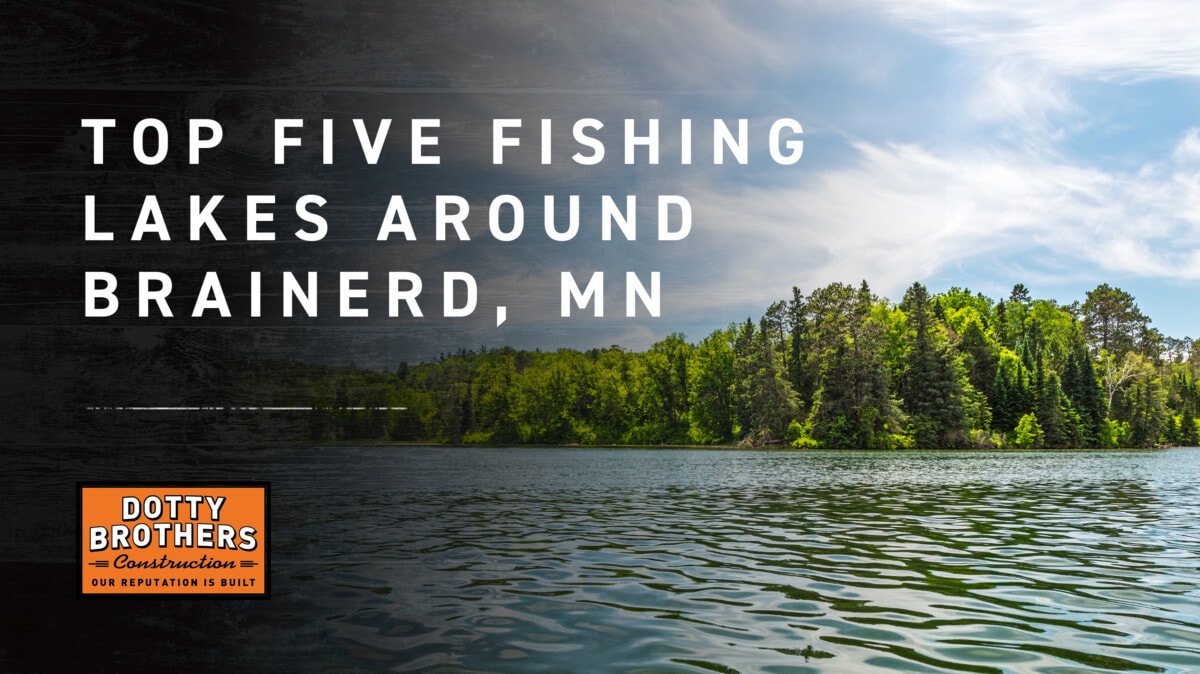
It’s right there in the name: Brainerd Lakes Area. The primary appeal of the area is its wonderful lakes. They are central to the area’s culture and a recreational marvel. Swimming, boating, fishing, waterskiing, paddle sports—anything you can do on a lake, you can do here, and everyone does. The people who live here year-round, the summer cabin dwellers, and the thousands of visitors who flock to the area in all four seasons are here for those natural resources. And while the crowds are smaller in the winter, the fun doesn’t stop. Ice fishing, snowmobiling—whatever outdoor activity you love is available here.
Let’s focus on fishing. The area is loaded with well-stocked lakes featuring a diversity of game fish from panfish and perch to muskies and almost every type and size in between. Whether you’re trying to catch enough fish for a meal, looking to land a trophy, or just after a fun day fishing, almost any of the area’s lakes will do. But we’ve narrowed down the choices for you here. Calling these the five “best” fishing lakes in the Brainerd area is subjective, but they’re definitely five great fishing lakes.
We’ll get the big one out of the way first. Located about 20 miles east of Brainerd, Mille Lacs is a very large lake. At 132,516 acres, it’s the second largest lake completely within Minnesota’s borders; only Red Lake is larger.
The lake’s gravel beds, rock beds, and mud flats are great places to find fish. Among the sport fish you can catch here are perch, crappies, smallmouth bass, largemouth bass, burbot, tullibee, walleyes, northern pike, and muskies. It is probably best known as a walleye lake, though population fluctuation and treaty negotiations tend to make the number of walleyes you can keep low, and often changes year to year. It’s best to check the DNR regulations before you head out.
There are all sorts of guide operations in the area as well, which can make the whole process very simple. Just get on a boat and go catch fish!
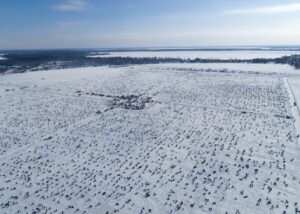
Gull Lake might be the quintessential Brainerd lake. It’s just a handful of miles north of the Brainerd-Baxter area and is the largest lake in that immediate area at 9,947 acres. It is probably the area’s most popular fishing and recreation lake. For anglers, Gull Lake offers typical Minnesota fish, but it specializes in bluegill, walleye, and northern pike.
It might be best known for the annual Jaycee’s Ice Fishing Extravaganza, typically held at the end of January or early February each year. This event is the world’s largest charitable ice fishing tournament and has raised over $4 million for Brainerd area charities. It’s a wild scene at Hole-in-the-Day Bay in Gull Lake: volunteers drill up to 20,000 holes in the ice the day/night before the event. Ice houses are not allowed, so when the shotgun start fires at noon, there are thousands of individual anglers hunched over their holes, hoping their line gets a hit. There are huge prizes, too: a truck, several 4-wheelers, an ice house—the top 150 win prizes. There’s a raffle, food trucks, and fishing equipment companies that set up booths to promote and sell their gear. It’s a real festival on ice.
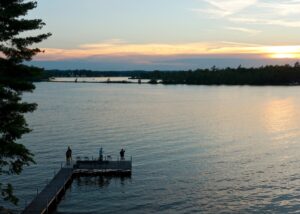
Located near but not connected to Gull Lake, North Long Lake is roughly 6,000 acres and features primarily northern pike, bluegill, and largemouth bass (though it contains lots of other fish common to the region as well). It’s another popular fishing destination, but of most interest is perhaps the black hole.
In the winter of 2003, a half-kilometer hole opened up in the ice, kind of a lake within the lake that puzzled scientists. On cloudy days, the hole would freeze over, and then on sunny days, it would open up again. Brainerd residents named it the “black hole,” and apparently migrating birds refused to go near the opening.
For all that spooky mystery, the “black hole” had a perfectly natural cause. In 2004, when the black hole did not return, a research lab in Brainerd sent samples of the lake bottom for analysis at a Seattle lab. There, they discovered a high concentration of diatoms, microalgae that live in the sediment at the bottom of the lake. Normally, they stay at the bottom, but these diatoms secreted “an oily substance that floats, bringing them to the surface,” where sunlight triggered photosynthesis and suppressed the freezing point of the water.
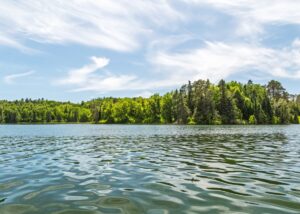
The largest lake in the Whitefish Chain of lakes at 7,714 acres, Whitefish Lake takes its name from the abundant whitefish that swim in it. The original Native name was “Kadikumagokag," which was translated by Joseph Nicollet as “Lake Where There are Many Whitefish.” No matter what you call it, it’s a world-class fishery where you can target northern pike, walleye, bass, bluegill, and (of course) whitefish. This is a deep lake, with a maximum depth of 138 feet.
The Chain was formed by the Pine River Dam, built in the late 19th century, which caused water levels to rise and created channels where the lakes had previously been separated. These lakes are rich in structure (underwater points, humps, drop-offs, channels, etc.), and the sheer number of them mean you have almost endless chances to find a honey hole.
Please note that if you are ice fishing Whitefish Lake or others on the Whitefish Chain, they contain several springs and narrow channel areas. This type of moving water makes for thinner ice, so for people new to the area it’s best to go with a guide or someone who knows the lakes well.
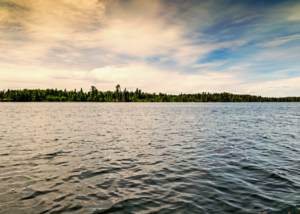
At 8,253 acres, Pelican Lake is another large body of water in the Brainerd Lakes area, and it, too, is a terrific fishing lake. This is a great lake to target walleye, northern pike, crappies, and largemouth bass, but the Department of Natural Resources manages the lake primarily for walleye, which are stocked annually at this lake (approximately 3.9 million walleye fry).
Pelican Lake offers a wide variety of fish habitat and structure: a mix of sand bars, steep drops, sunken islands, and a changing weedline. The water is very clear, which means you have to take precautions not to spook the fish. Targeting them in deeper water is a good tactic. (Invasive species are a problem, so please remember to empty live wells and clean off your boats if you transition from one lake to another!)
If you’re fishing early in the season, check for when the shiner minnows spawn—typically around Memorial Day weekend. Where you see shiner minnows flashing in the light, you’ll find walleye.
No matter how experienced you are, how long you’re here for, or where you fish, any of these lakes—and many more in the area—can deliver a memorable day (or week, or season, or lifetime) of great fishing memories—and some terrific meals, too!



